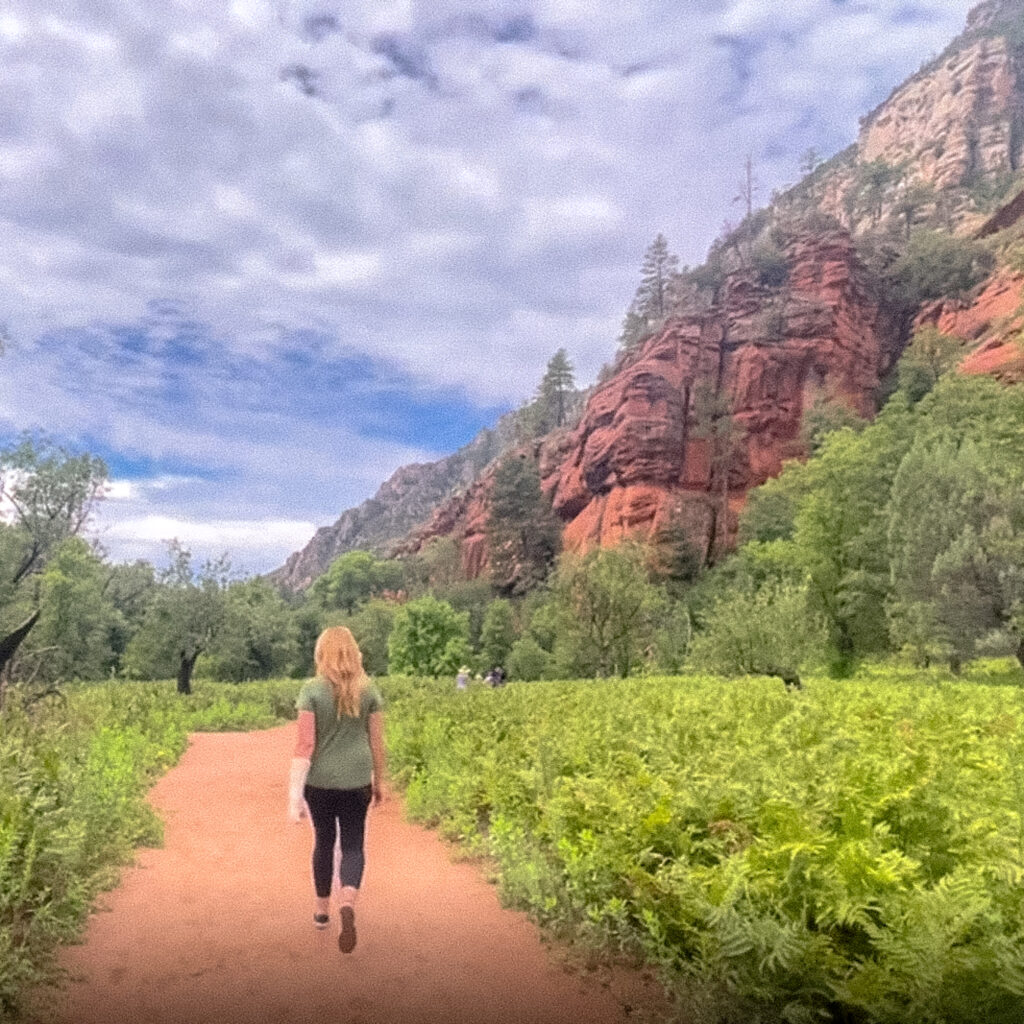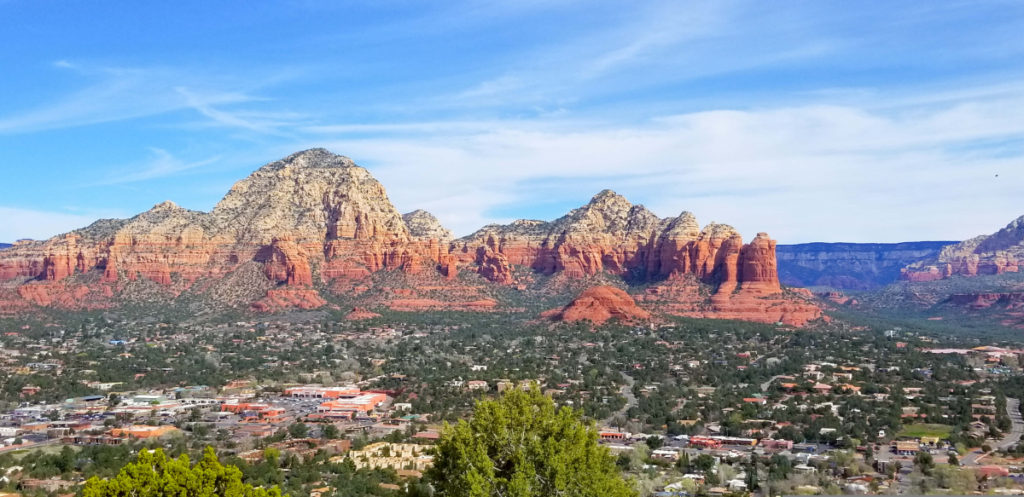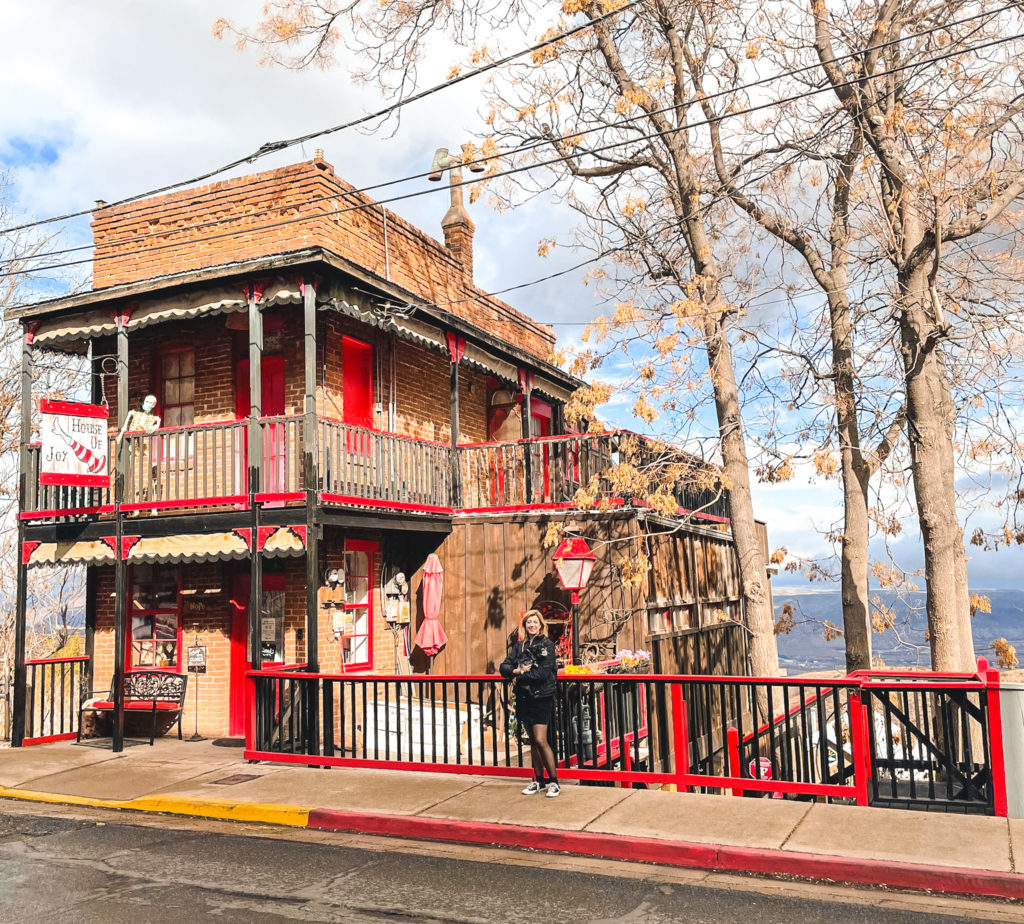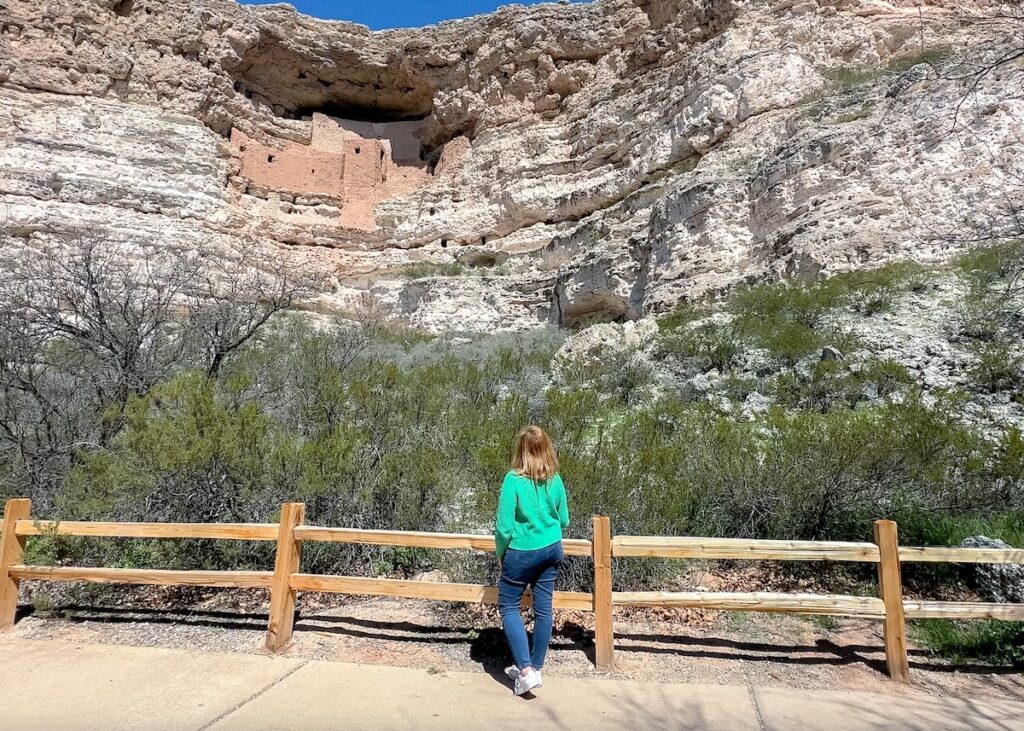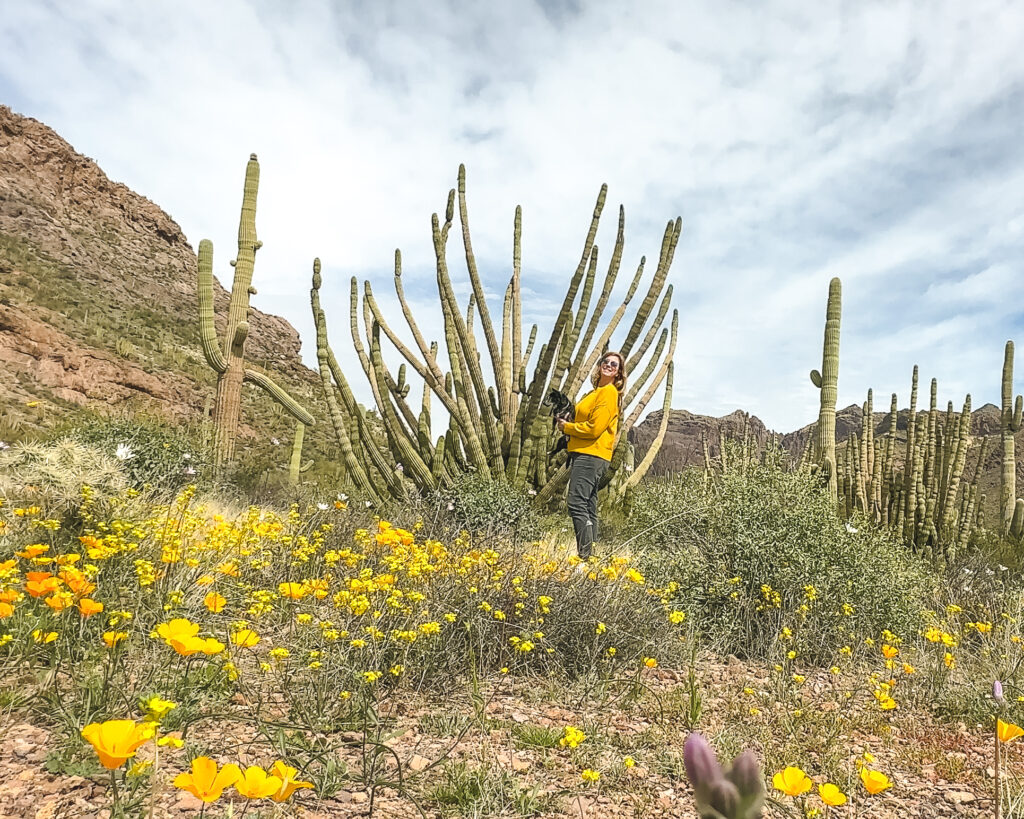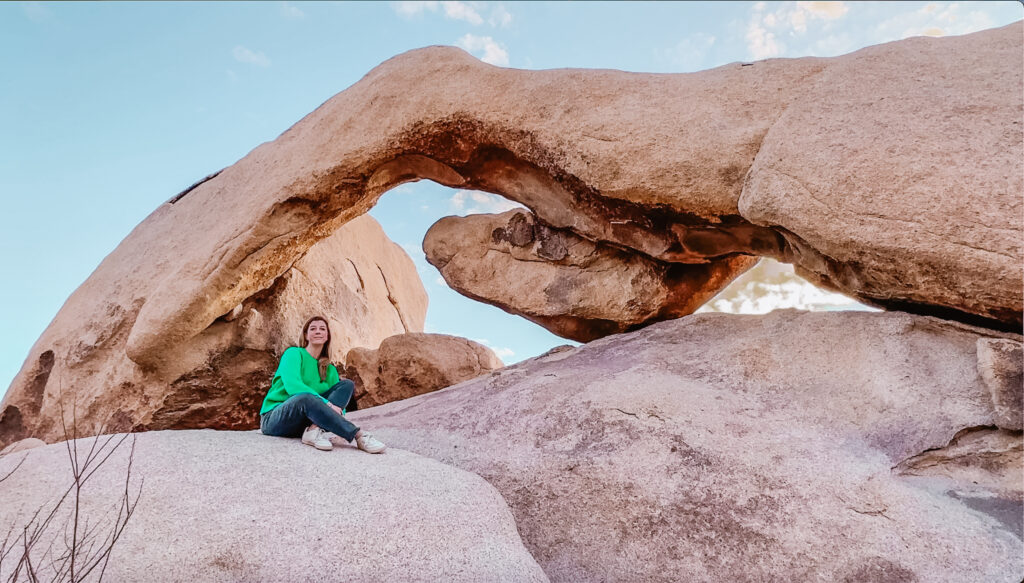
This Joshua Tree itinerary is perfect for your first visit to Joshua Tree National Park.
As a long time SoCal resident, I have traveled to Joshua Tree dozens of times. There’s just something about that vast desert landscape and those quirky looking Joshua Trees that keep calling me back.
Whether you’re into hiking, rock climbing, photography, or just want to get a closer look at the thousands of local Joshua Trees, a visit to Joshua Tree National Park is a must.
No matter how much time you plan to spend inside the park, you’ll find plenty of things to do in Joshua Tree.
Many of the most popular Joshua Tree attractions are located close the the main roadway, so you really don’t have to go far to enjoy a trip here.
This Joshua Tree National Park itinerary will take you to all the best spots inside the park. I’ll also share my best tips to help you make the most of your visit.
Some of the links in the post are affiliate links. If you make a purchase through these links it helps to support this site at no extra cost to you.
Joshua Tree Itinerary
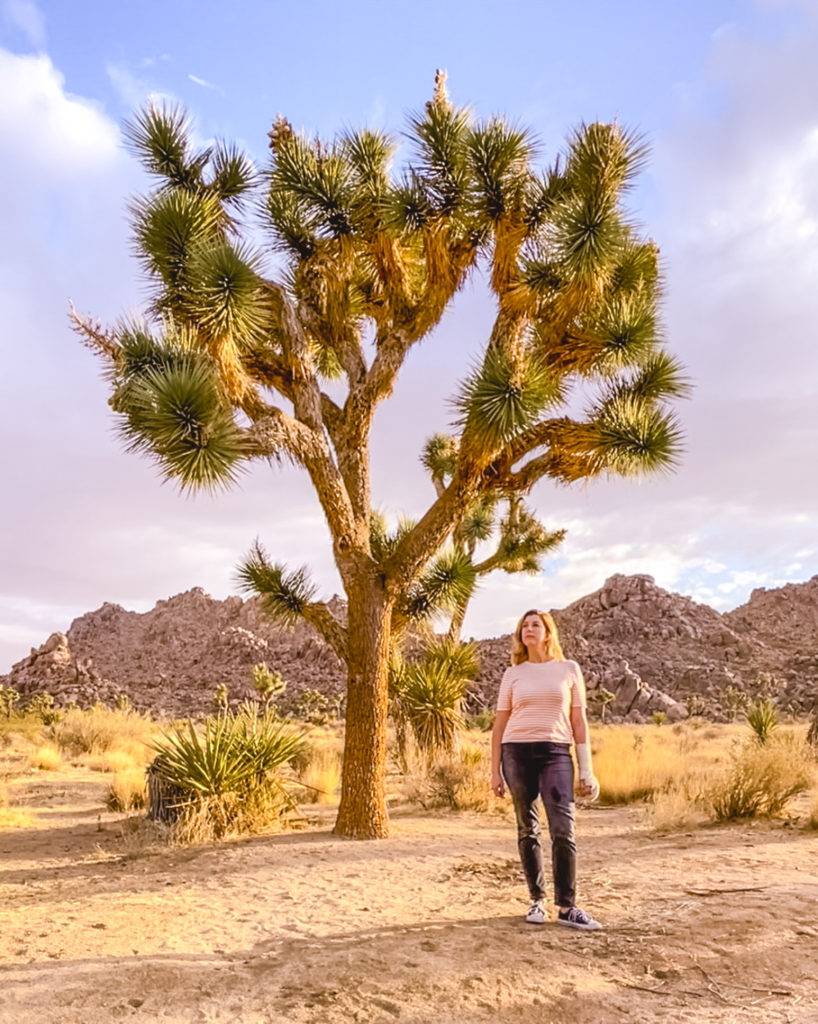
This Joshua Tree itinerary is focused solely on the best things to do inside Joshua Tree National Park. Next week I’ll be sharing my favorite Joshua Tree attractions outside the park, and believe me, there are many.
If you’re planning your first visit to Joshua Tree National Park, I recommend two full days to explore the park and all the major sights.
That being said, this post can also work as a one day Joshua Tree itinerary or as a day trip from Palm Springs.
As mentioned above, the majority of the park’s attractions are located right off the main roadway, so visiting this park is easy and not overly time consuming.
The two main roads through the park are Park Blvd. and Pinto Basin Road. Both of these roads are fully paved two lane roads.
If you’re curious about the best time to visit Joshua Tree I recommend a spring or fall visit. This will give you the chance of good weather.
Listed below you’ll find the best Joshua Tree attractions to include in your Joshua Tree itinerary, starting with my favorite place inside the park to enjoy sunrise.
Cholla Cactus Garden Sunrise

Nestled within Joshua Tree National Park, the Cholla Cactus Garden is a unique and breathtaking destination for nature enthusiasts.
The garden is home to one of the largest natural gardens of cholla cactus, a plant native to the Sonoran and Mojave deserts. The garden is a must-visit location for any nature lover or photographer.
The Cholla Cactus Garden provides visitors with an opportunity to experience the diverse plant life of the Mojave Desert. The cholla cacti are the main attraction, with their unique shape and vibrant yellow-green color.
However, visitors will also have the opportunity to see other species of flora, such as creosote bushes, ocotillo, and Joshua trees. Each plant is uniquely adapted to the harsh desert environment, showcasing nature’s resilience and beauty.
In addition to the diverse plant life, the Cholla Cactus Garden is also home to a variety of wildlife. The garden is known for its population of the teddy bear cholla cactus, a species of cactus that provides a habitat for the desert night lizard.
Visitors may also spot other reptiles, such as the western diamondback rattlesnake or the desert iguana. The garden is also a haven for bird watchers, with species such as the cactus wren and the common raven is frequently spotted.
Due to its unique landscape and beauty, Cholla Cactus Garden is one of the most popular spots inside Joshua Tree National Park to catch sunrise.
That being said, since many people don’t like to get up that early, you’ll be rewarded with light crowds and a beautiful sunrise.
As you can see from the photo above, the Cholla Cactus look like fuzzy.
Arch Rock Trail
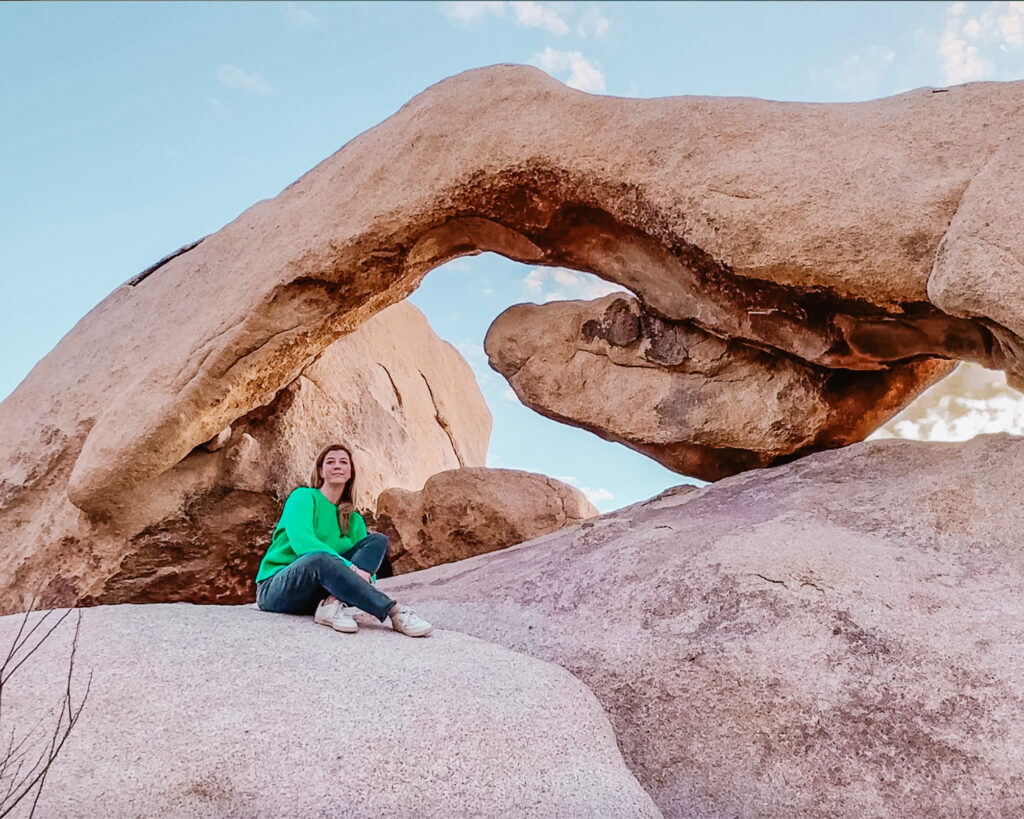
Joshua Tree National Park is home to many beautiful rock formations and natural wonders, but none are quite as striking as Arch Rock. This geological formation is a popular destination for hikers and rock climbers, and has become an iconic landmark of the park.
Arch Rock is a result of millions of years of geological activity. The rock is made of granite, which was formed deep below the earth’s surface over 100 million years ago.
As the earth’s crust shifted and eroded, the granite was exposed to the elements, and over time, the wind and rain carved out the unique shape of Arch Rock.
Arch Rock is not just a beautiful sight to behold, it also holds cultural significance. The rock has been a gathering place for Native American tribes for thousands of years, and some believe that it was used for spiritual ceremonies.
Today, Arch Rock continues to draw visitors from around the world, who come to marvel at its unique shape and soak in the natural beauty of the park.
When planning your visit to Arch Rock I recommend arriving as early as possible. Once late morning rolls around it will be very busy on the trail and at the rock itself.
If you’re short on time and doing a Joshua Tree one day itinerary, make this your second stop of the day after Cholla Cactus Garden.
Heart Rock
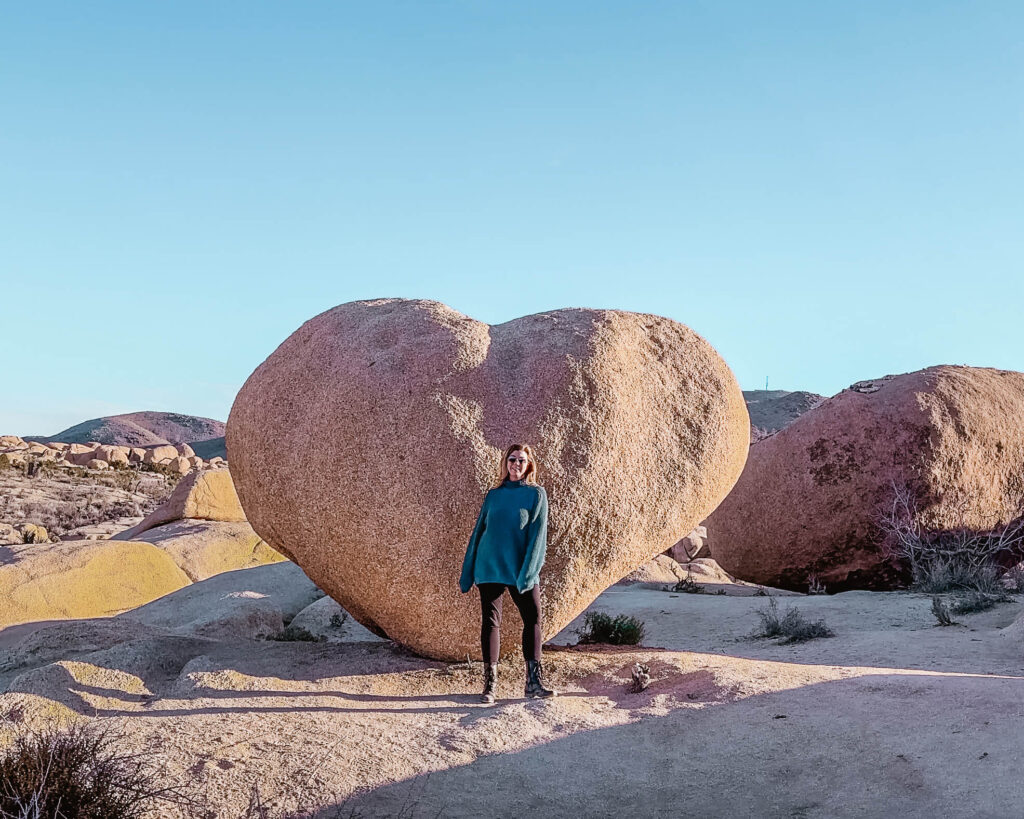
Heart Rock is located a short walk off the Arch Rock Nature Trail and is worth a quick visit if you’re already in the area.
As pictured above, Heart Rock is a natural formation that has been created by erosion over millions of years. It is made of granite and stands about 20 feet tall.
The rock’s shape is what gives it its name, as it resembles a heart when viewed from a certain angle.
Once you arrive at the loop section of Arch Rock Trail, you’ll see signs toward Heart Rock if you walk toward the left. It’s less than five minutes off the main trail.
As you might imagine, Heart Rock is popular with photographers. I recommend you arrive early if you’d like some time here to get your own photos.
Skull Rock
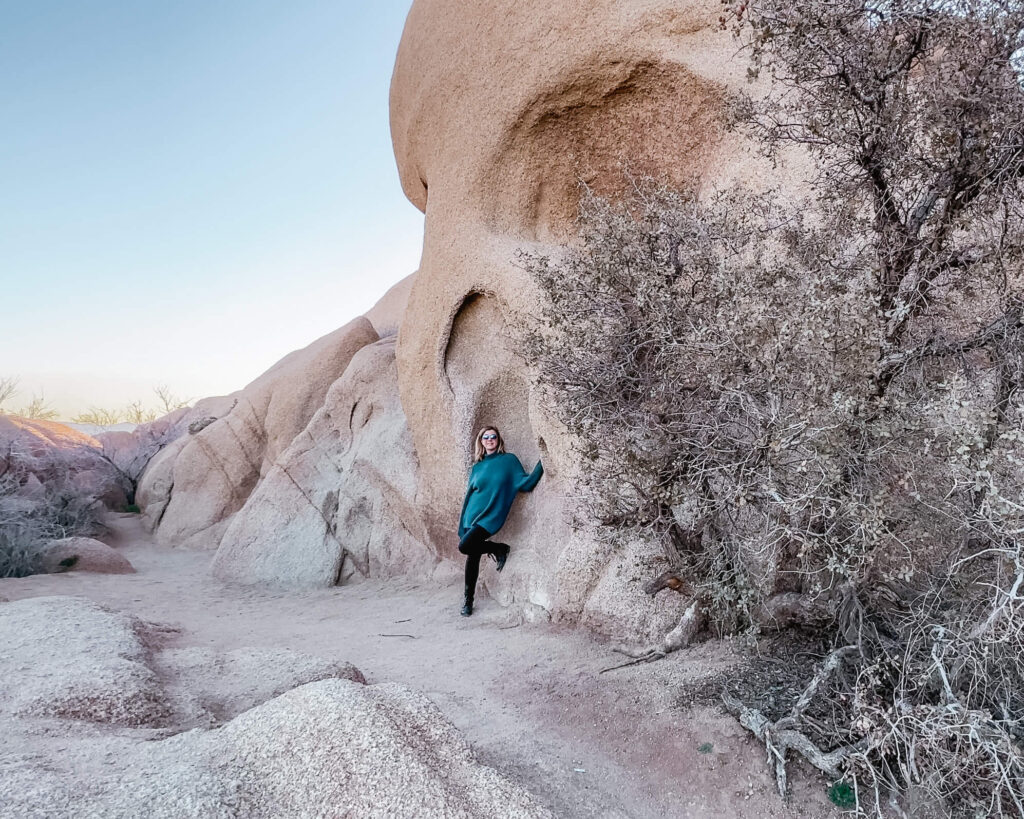
If there’s one thing that Joshua Tree National Park is known for besides its iconic Joshua Trees, it’s Skull Rock.
This unique rock formation has become an iconic symbol of the park, and it has attracted visitors to the park for decades.
One of the best things about Skull Rock is that it’s easily accessible. You can park your car along the nearby roadway and take a short hike to the rock formation.
The parking area is right next to Jumbo Rocks Campground. The walk to Skull Rock from the park road is less than one minute.
Once you get there, you can climb around and explore the nooks and crannies of the rock. But be careful, as the rocks can be slippery and jagged in some areas.
Also, be sure to stay on the designated trails and follow the park’s rules to ensure that this iconic landmark is preserved for future generations.
Just behind Skull Rock you’ll find a field of large rocks and boulders to explore. This area is also great for photos and is a unique spot for sunrise if you’re willing to get up early.
Cap Rock Nature Trail
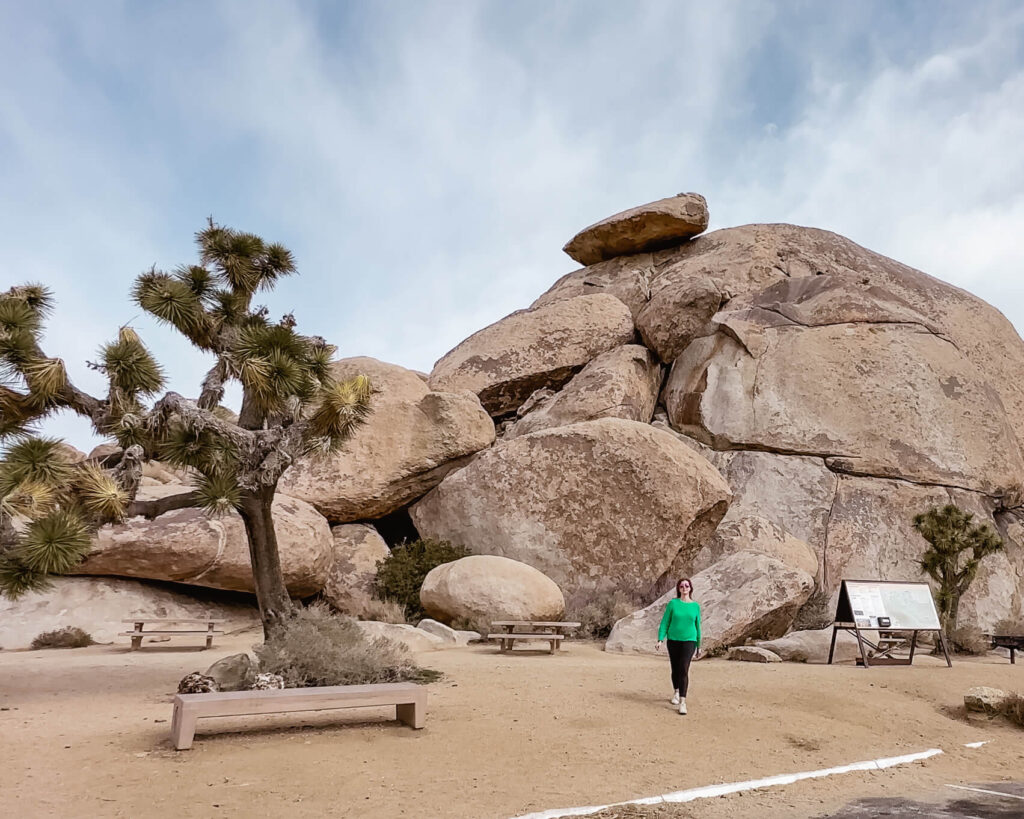
Cap Rock is a granite formation that was formed over 100 million years ago during the Late Cretaceous period.
It was created through the process of exfoliation. This occurs when the outer layers of granite peel away due to changes in temperature and pressure.
The rock was named “Cap Rock” because of its distinctive shape. It resembles a cap sitting on top of a pedestal.
Cap Rock has been a popular destination for hikers and rock climbers since the early 1900s. In the 1920s and 1930s, rock climbers began exploring the area and established many of the climbing routes used today.
Today, Cap Rock is a popular spot for tourists and hikers who come to enjoy the unique rock formations.
Just to the right of Cap Rock is a short nature trail. The trail features signs along the pathway pointing out various local plants found in the desert.
Hidden Valley Nature Trail
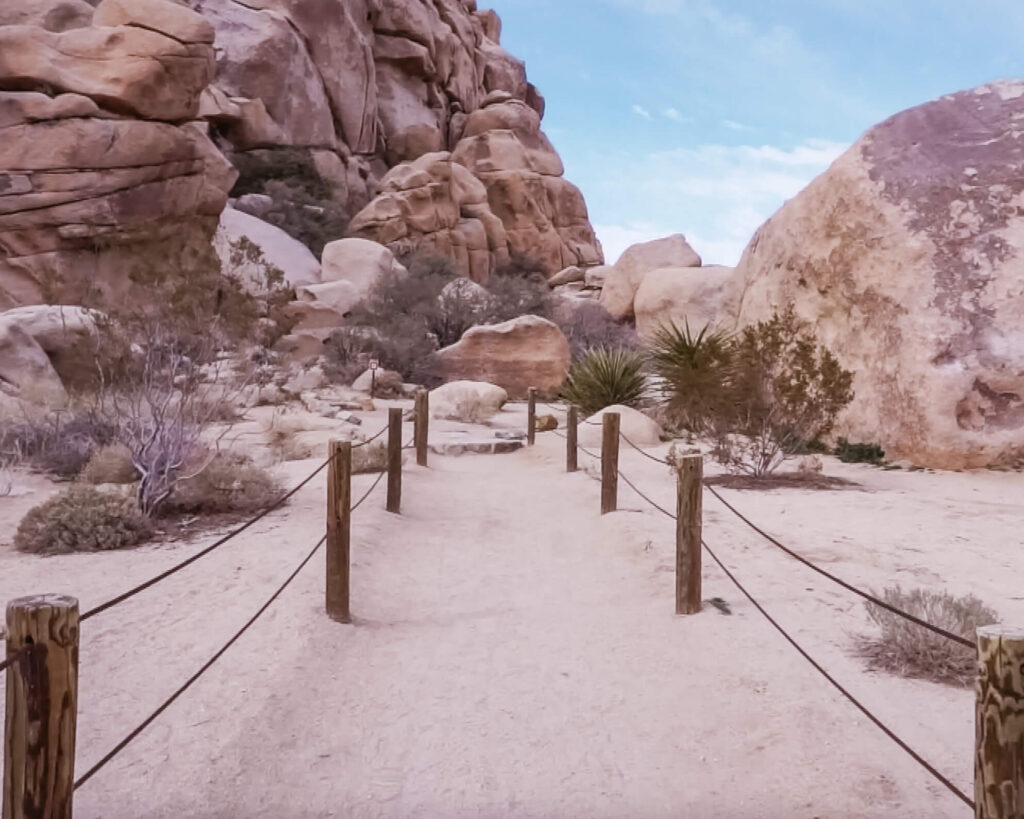
The Hidden Valley Nature Trail is a one-mile loop trail that takes visitors through a beautiful valley surrounded by towering rock formations.
The trail is also known as the “Cattle Rustlers’ Trail” due to its history. Back in the 1800s, cattle rustlers would hide their stolen livestock in this secluded valley. The valley’s hidden location provided them with an ideal hiding spot, as it was difficult for law enforcement to find them.
Today, the Hidden Valley Nature Trail is a popular destination for hikers and nature lovers. The trail offers breathtaking views of the surrounding rock formations and unique flora and fauna.
Visitors can observe various types of desert plants, including Joshua trees, cholla cacti, and creosote bushes.
Due to its accessibility, this is one of the most popular hiking trails in the park. That being said, this trail is extremely busy during peak hours of the day.
For a more pleasant experience I recommend hiking Hidden Valley Trail in the morning or late evening.
Barker Dam
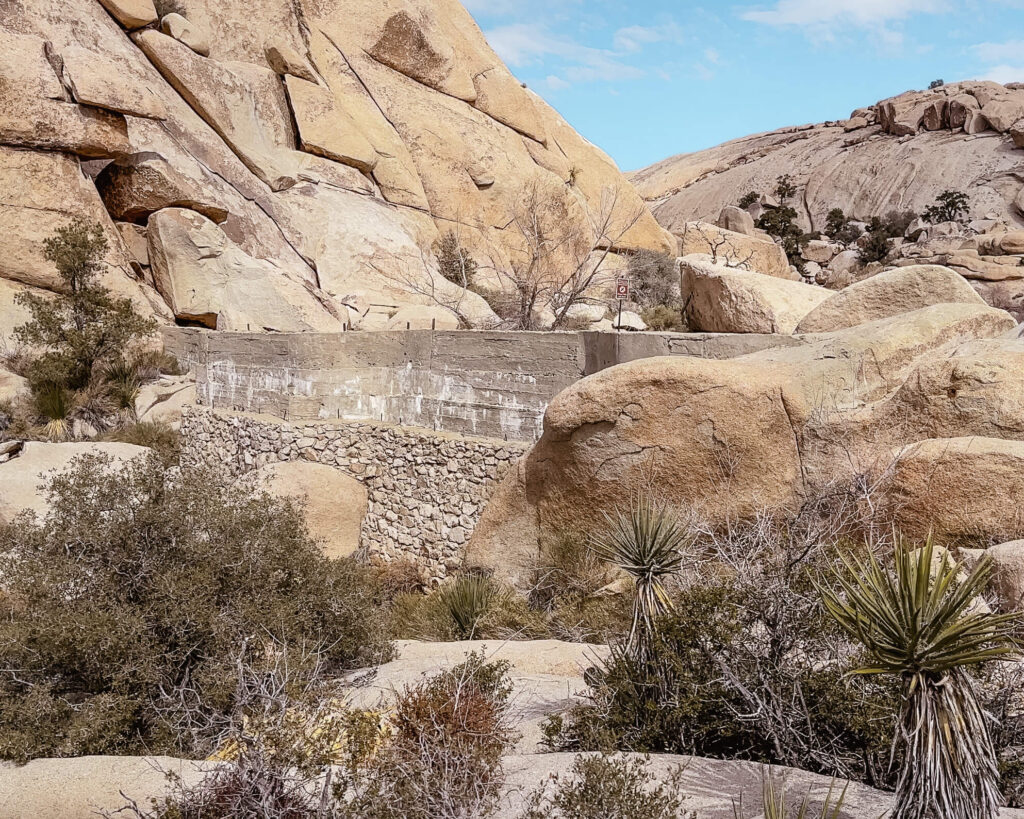
Located in the heart of Joshua Tree National Park, Barker Dam Trail is a popular hiking destination that offers a glimpse into the area’s rich cultural and natural history.
This 1.3-mile loop trail takes you through stunning rock formations, a scenic desert landscape, and a historic dam built by early settlers.
The trail takes you through a varied landscape of rock formations, sandy washes, and Joshua trees.
Visitors can see a variety of desert wildlife, including lizards, snakes, and birds of prey. The trail is particularly scenic during the spring when the desert wildflowers are in bloom.
Having said all that, Barker Dam is admittedly my least favorite trail in Joshua Tree National Park.
To me, it’s a hike to a cement wall in the desert. I know there’s plenty to see along the way, but there are far more scenic hikes in the park.
Wall Street Mill
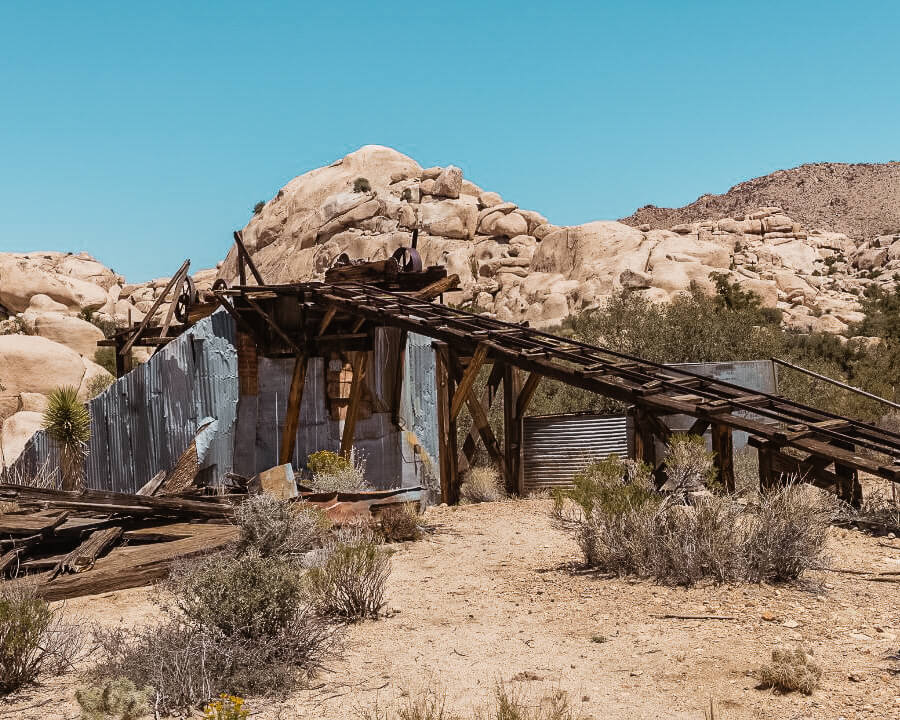
Located just a short distance from Barker Dam is the park’s famous Wall Street Mill. This historic mill was once a bustling center of industry and is now a fascinating place to explore.
The Wall Street Mill was built in the late 1800s and was used to process gold ore from the nearby mines. It was named after the Wall Street Mine, which was one of the most profitable mines in the area.
The mill operated for several decades and was eventually abandoned in the early 1900s.
Today, visitors to Joshua Tree National Park can visit the Wall Street Mill and explore the remains of this historic structure.
The mill is located in a remote area of the park and requires a short hike to reach. Once there, visitors can explore the various buildings and equipment that were used in the milling process.
The rusted machinery and crumbling buildings provide a fascinating glimpse into the past and are a testament to the ingenuity of the people who built them.
In addition to the mill, the area around Wall Street Mill is also home to a variety of wildlife. Visitors may spot desert bighorn sheep, coyotes, and various species of birds.
Hall of Horrors
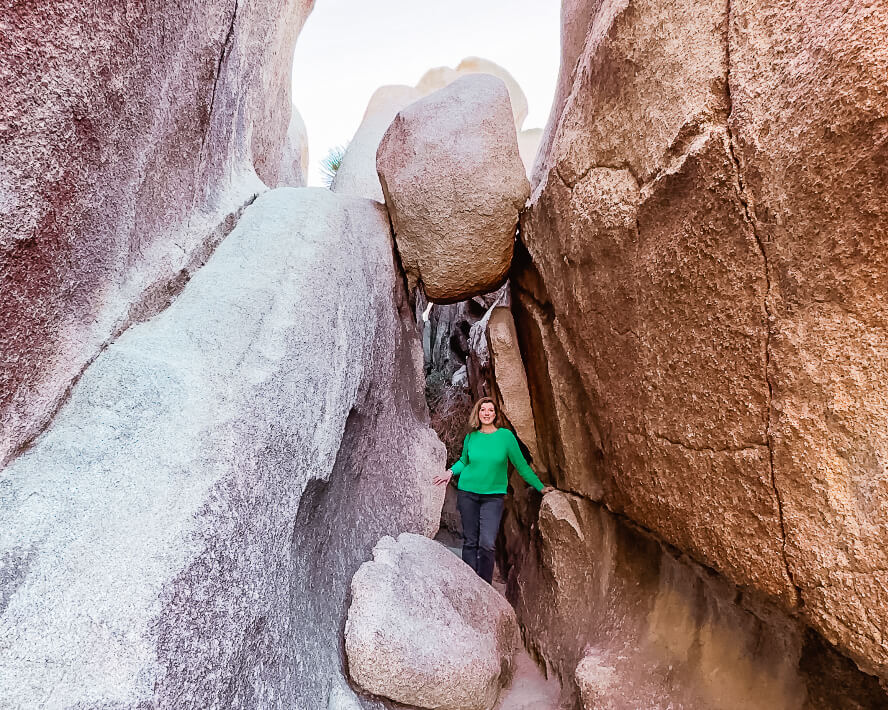
The Hall of Horrors is a 0.6 mile flat loop trail that leads around a large pile of boulders. The Hall of Horrors name relates to the several slot canyons you can find in this area.
The two main slot canyons will be found in a second pile of boulders that you cannot see from the parking lot. Once you follow the trail around the first pile of boulders you’ll see the second pile of boulders off in the distance.
That being said, there are other smaller slot canyons mixed in throughout this area. I found a small one on the right hand side of the first pile of boulders.
Getting to the slot canyons will require some exploring and a little climbing, but that’s part of the fun.
You’ll also notice this area is popular with rock climbers as well. If you’ve ever wanted to try rock climbing you can join a guided rock climbing trip while you’re here.
Ryan Mountain Trail
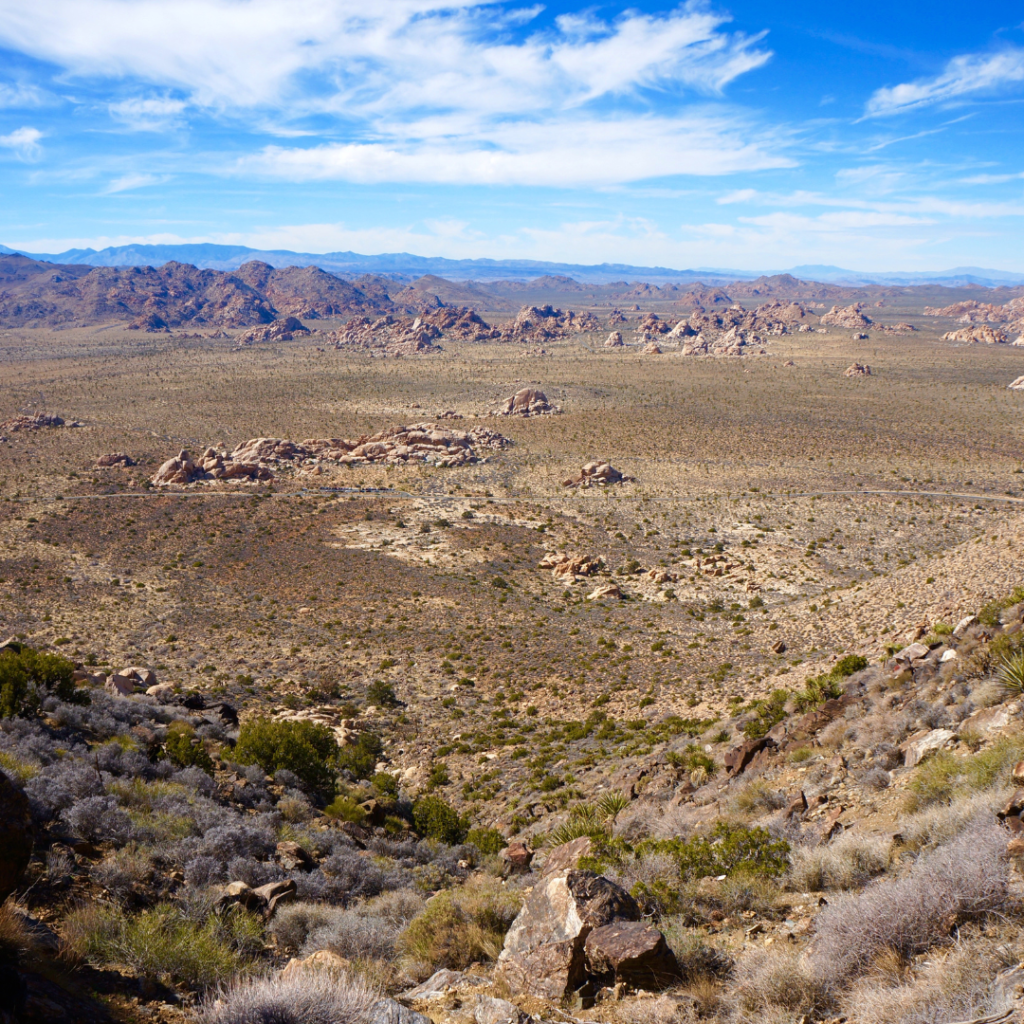
The Ryan Mountain Trail is a moderately difficult 2.9 mile out and back hike. The trail has about 1,050 feet of elevation gain.
The trail is located near the center of Joshua Tree National Park. It will take the average hiker about 2 hours to complete from start to finish.
The trailhead for the Ryan Mountain Trail is located off Park Blvd. between Ryan Campground and Sheep Pass Campground.
From the top of Ryan Mountain you’ll be rewarded with incredible views of the surrounding Coachella Valley.
Split Rock
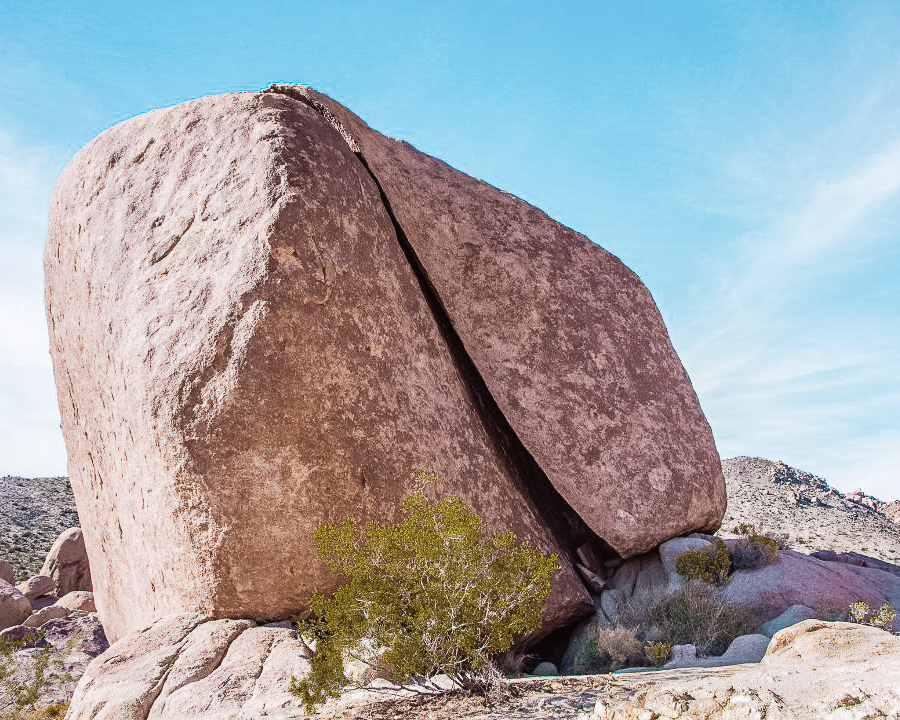
Split Rock is located near the northern end of Joshua Tree National Park. It can be accessed via a short hiking trail that starts at the Split Rock parking area.
The Split Rock Loop trail is approximately 2.5 miles round trip and is rated as an easy to moderate hike. Along the way, you will pass through a beautiful desert landscape, dotted with Joshua trees, yucca plants, and other desert flora.
Once you reach Split Rock, you can explore the area around the boulder. You can even climb inside the split itself.
The interior of Split Rock is a cool, shady refuge from the hot desert sun offering a unique perspective on the surrounding landscape.
Keys View Sunset
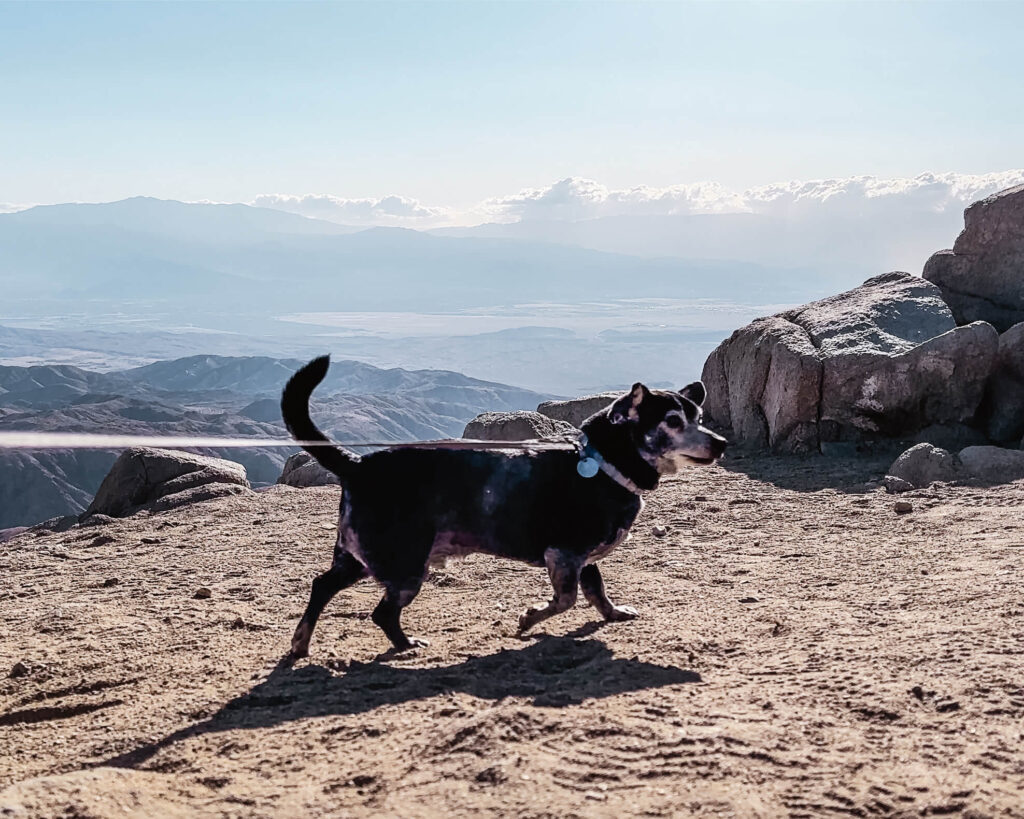
Keys View is the top spot in Joshua Tree for sunset and is a great opportunity for beautiful photos of the park.
Standing at an elevation of 5,185 feet, it offers the most stunning vista in the park. Visitors can enjoy panoramic views of Joshua Tree and the Coachella Valley all the way to the Salton Sea and San Gorgonio Pass.
You’ll want to arrive at least one hour before sunset if you want to actually catch the sun setting. There is a decent sized parking area, but the spots fill up quick in the early evening.
If you happen to be running late and can’t get a spot, the overlook clears out as soon as the sun sets.
Once the sun dips behind the mountain, grab an open parking spot and head up to the lookout point. Then enjoy the sky filled with beautiful pink and orange colors. In my opinion, the best views are just after the sun sets anyway.
If you have other evening plans, Keys View is a good spot any time of day.
Be advised, it does get quite windy in the section of the park due to the high elevation. Bring a jacket or sweater with you.
Stargazing
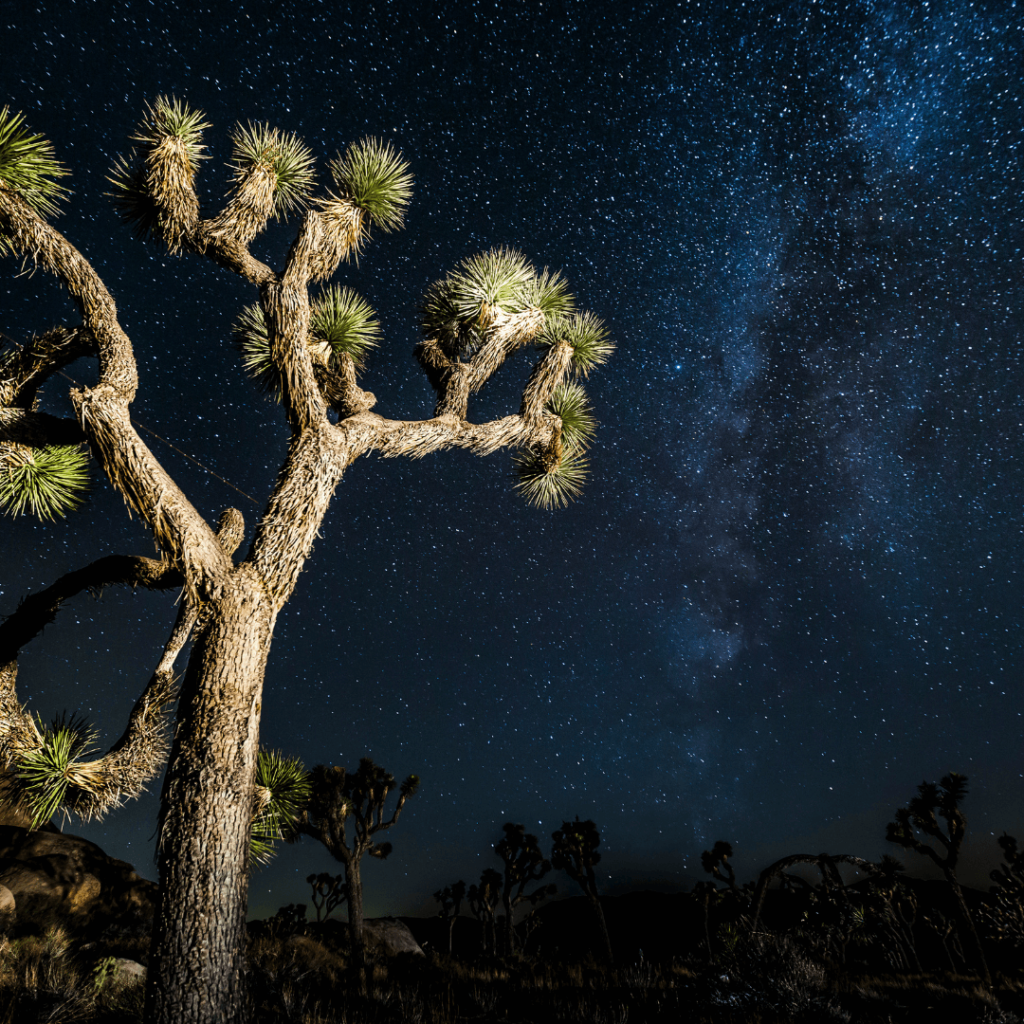
Stargazing is extremely popular in Joshua Tree National Park due to the minimal light pollution in the surrounding area.
In fact, the park has been officially designated an International Dark Sky Park by the International Dark Sky Association. It’s the perfect place to view the stars on a clear night.
You’ll find several designated stargazing areas inside the park. You can of course view the night sky from just about anywhere. Just be sure not to stray off designated trails and park only in designated parking areas.
If you’ve ever wanted to try out astrophotography, this is just the place. You’ll likely see other photographers out on clear nights as well.
Be prepared for chilly temperatures at night. It’s recommended you bring more layers than you think you’ll need.
Also, keep in mind wildlife may be more active at night. Drive slow and keep your eyes open as you move about the park.
Tips for Visiting Joshua Tree National Park
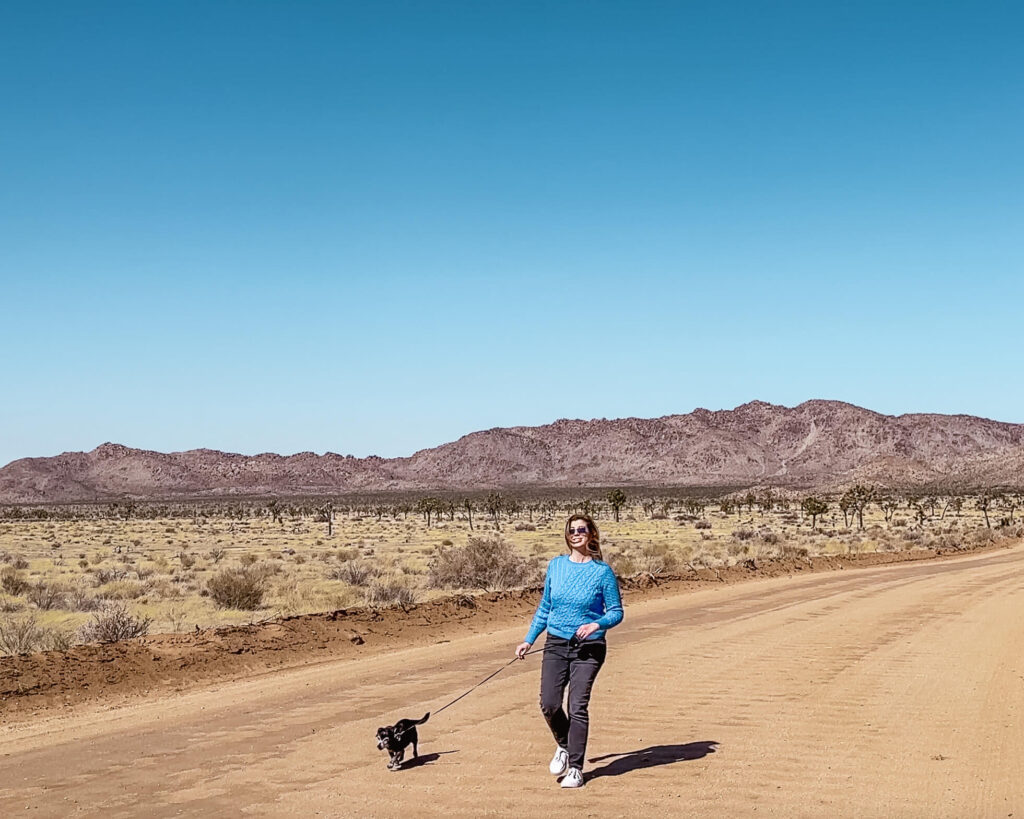
Here are some tips for visiting Joshua Tree National Park to help you plan and prepare for your first visit.
- Don’t forget your National Park Service Annual Pass. If you don’t already have one you can purchase it at the entrance. Otherwise park admission is $30 per vehicle which gets you a seven day pass.
- Bring food and water for the full day. There are no stores or concessions located inside the park.
- Dress in layers. The park gets chilly in the early mornings and evenings.
- If possible, plan to visit on a weekday to avoid the crowds.
- Get up for sunrise at least once during your visit. You won’t regret it.
- Don’t skip Cholla Cactus Garden, Arch Rock, Skull Rock and Hall of Horrors. Those are my favorite spots inside the park.
- If you’re looking for a restaurant near the park, head to the Joshua Tree Saloon for beer and burgers.
- If you have extra time and want to see more desert landscapes, head to Death Valley National Park or the Mojave National Preserve.
I hope you’ve enjoyed this Joshua Tree itinerary and that I’ve inspired you to plan a trip of your own to one of my favorite national parks. As always, thanks for reading.
Related Posts
Flagstaff to Sedona Road Trip Itinerary
The drive from Flagstaff to Sedona is one of the most beautiful drives in the…
Scottsdale to Sedona Day Trip Itinerary
10 Best Things to Do in Jerome Arizona
The best things to do in Jerome can all be enjoyed in one day or…
Montezuma Castle National Monument Travel Guide
This Montezuma Castle National Monument travel guide will help you plan your visit to this…
Things to do at Arcosanti Arizona
Arcosanti Arizona is one of the most unique and interesting cities in the Southwestern USA….
Organ Pipe Cactus National Monument Travel Guide
Organ Pipe Cactus National Monument is a must visit during an Arizona road trip. This…

Eden Fite
Solo Traveler | Dog Lover | Avoider of CrowdsI help busy people find creative ways to travel more.
